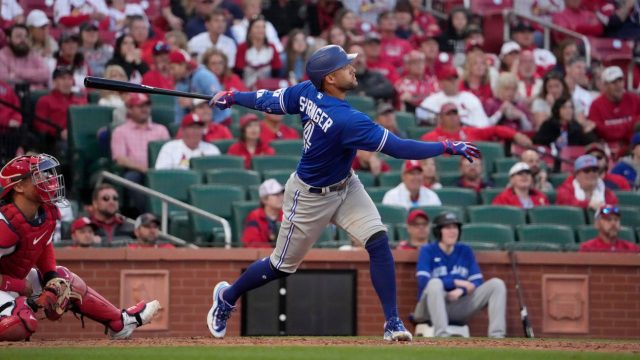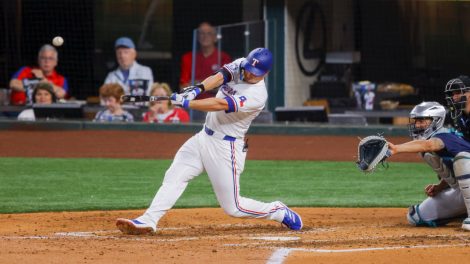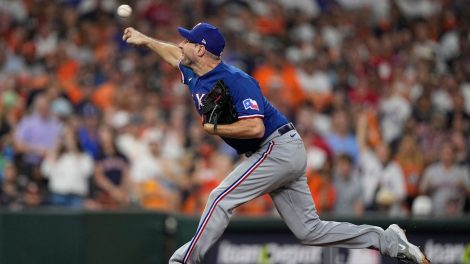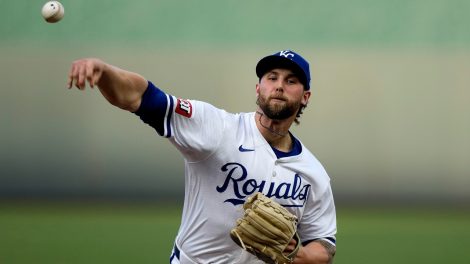ST. LOUIS – In examining his 74-game stint as manager of the Toronto Blue Jays last summer, John Schneider found plenty to like, and some things he wanted to change, too.
“I liked the way that we prepared as a staff. I liked having input in some of the tools that we build in terms of objective numbers and having those conversations. Being able to adjust on the fly because of the prep work that you do,” says the 43-year-old. “Things that I would do differently, it’s more so what we tried to do in camp with specific messaging.
“Last year, you take over, overnight you go bench coach to manager and you’re trying to change things, but not disrupt what the players are doing and not make it about you. Not that I’m making it about me this year, but I think it’s just a longer runway to really hammer home some messaging that we think is important.”
Baked into those words is a blueprint for how the Blue Jays will be run in the dugout and the clubhouse this season, beginning with pre-game preparation on how to execute on a given day, to the foundational tenets that have been a regular talking point around the club.
The messages he believes were best accepted this spring?
“Accountability, meaning knowing that the guy next to you is going to be prepared, and just understanding that every little detail in the game matters,” says Schneider. “We tried to reinforce that with conversations, with our drill work. If you have to do with humour, sometimes you do it, but then recognizing it when it does happen. So those two. Accountability and little things that are going to add up over the course of the year.”
Those principles played a key role in Thursday’s mad-cap 10-9, season-opening victory over the St. Louis Cardinals. Pivotal in the Blue Jays’ win were finer-point details such as Kevin Kiermaier’s first-to-third dash on George Springer’s game-tying RBI single in the ninth, his deft read leading to runners on first and third with none out and eventually Vladimir Guerrero Jr.’s game-winning sacrifice fly.
Now, the Blue Jays happened to have the right guy on the bases to meet the moment, as only someone with Kiermaier’s speed and sense makes that dash.
But part of creating the space for such a play to happen is not only building the expectation that it does, but also the reps for it to become second nature.
“It all started with the first meeting, first full-squad workout, like, ‘hey, let’s utilize our roster, our speed and our personnel to our advantage,’” says Kiermaier. “In spring we did it and when you do it in spring, there’s no transition when the regular season gets here. We didn’t change anything, we played our game. Expect a lot of that throughout the whole year. We got a lot of guys who can run the bases really well, put pressure on the defence and that’s what we plan on doing.”
Pressuring the opposition is also the modus operandi for Whit Merrifield, whose leadoff walk against Ryan Helsley started the decisive ninth-inning rally and then went first-to-third on the Kiermaier single that followed.
When it’s suggested to him that the Blue Jays ran the bases aggressively Thursday, he interjects and says, “I wouldn’t even call it aggressiveness. It was just good baserunning.”
Aggressive, he points out, would have been Guerrero trying to score from second in the eighth inning when Alejandro Kirk’s little roller out to the pitcher drew catcher Andrew Knizner toward the mound. Guerrero definitely thought about it, rounded third with some zeal, but ultimately didn’t test Paul Goldschmidt’s ability to throw a moving Knizner a strike, and whether the catcher could get back home to apply a tag.
“It’s just players engaged in the game, reading balls, not just being happy getting on base,” said Merrifield. “You’re a baserunner and you’ve got a team full of those guys.”
The same applies defensively, in the batter’s box and on the mound – players, coaches and staff all being prepared in advance for opportunities that may come up in the game so they’re better able to execute in the moment.
Such is the standard Schneider is setting for, and demanding of, his players.
“He is extremely organized and he is very open-minded,” GM Ross Atkins says of his manager. “Those two things allow for our environment to be hopefully optimized and seemingly thus far it has been.”
CLOSING TIME
Jordan Romano’s first save of the season was notable not only for the way it locked down what had been a loopy four innings of see-saw baseball, but also for how seamlessly his first trip through leverage with the pitch clock went.
Per Statcast data, Romano’s pitch-clock equivalent pace last season was 14.5 seconds with the bases empty and 17 seconds with runners on, both cutting it close to the 15- and 20-second limits in play this season. While Cardinals counterpart Ryan Helsley took one violation on the clock for not delivering a pitch in time, “I really didn’t notice it too much,” said the righty from Markham, Ont.
“When you have a good idea of the zone with your pitches, it’s not going to be that big of a deal,” added Romano. “I feel like it might be more of an issue when you’re trying to find it a little bit and the clock is going. (Thursday) was no issue. I pitched with it eight times this spring, so definitely adjusting the routine, but didn’t notice it much.”
The Blue Jays did have one violation Thursday, called when Kirk didn’t have his PitchCom earpiece in place in time, leading to a ball against Alek Manoah.
VARSHO VS ALL
An interesting note from Nick Ashbourne on Daulton Varsho’s sacrifice fly in the fourth inning Thursday after the Cardinals brought lefty Zack Thompson in specifically to face him.
So, when Varsho is making that type of contact against a lefty, what’s working for him?
“I’m seeing it deep, understanding what I need to do in that situation,” he explained. “I’m not trying to do too much and allowing the pitcher to provide the power. When I’m able to do that, a lot of good things can happen.”
In 256 career plate appearances versus lefties, Varsho is a .234/.275/.339 hitter but the Blue Jays believe he’ll be far better than that this season.
“He can beat you in a lot of different ways, whether it’s with his control of the zone, damage potential. But we’ve seen that,” said Schneider. “There’s a reason why we kind of had him up in the four-hole. I’m not going to do much with him in terms of pinch hit, so we trust him against those lefties, too. Doesn’t have to be a hit. You guys haven’t seen him bunt yet. He can really bunt, too, for a hit. I thought it was a great approach from him.”
QUOTABLE
“We’re trying to keep Kirky and Belt back-to-back to really get some danger going on the bases.” – Schneider on how much speed factors into whether Varsho or Brandon Belt bat cleanup between Vladimir Guerrero and Kirk.











